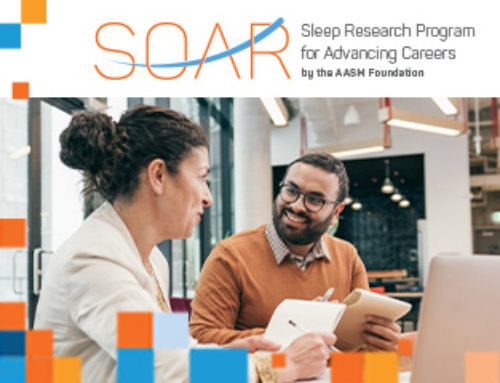Three award recipients collaborate to make a larger impact on sleep medicine
Three recipients of the 2017 Strategic Research Award have projects that focus on the role of telemedicine, using the AASM SleepTM platform, in the evaluation and management of patients with insomnia. All three projects are examining similar research questions, but from different perspectives and with slightly different study designs and patient outcomes. The sleep researchers met at the beginning of their projects to share data collection methods and, long term, consider pooling data for analyses of a combined dataset. Learn more about their on-going collaboration.
Increasing access to care through patient satisfaction

Philip Gehrman, PhD, is an Associate Professor in the Department of Psychiatry at the Perelman School of Medicine at the University of Pennsylvania. His project is focused on determining if cognitive behavioral therapy for insomnia (CBT-I) delivered by AASM SleepTM is effective in improving insomnia severity, satisfaction and adherence to treatment, compared to in-person delivery of CBT-I in patients with chronic insomnia. The overarching hypothesis is that use of telemedicine to deliver CBT-I produces similar clinical improvements to in-person delivery and is acceptable to patients.
Sixty individuals with insomnia are being randomly assigned to receive CBT-I either in-person or via telemedicine. “Although CBT-I is the gold standard recommended treatment for insomnia, many patients with insomnia do not have direct access to this type of treatment,” said Gehrman. “If it is demonstrated that delivery via telemedicine is as efficacious as in-person treatment, that would open the door to using this technology to greatly increase access to care.”
Providing a new avenue for post-hospitalization care

Sairam Parthasarathy, MD, is a Professor of Medicine and Interim Chief in the Division of Pulmonary, Allergy, Critical Care and Sleep Medicine at the University of Arizona. His project compares telemedicine CBT-I (via AASM SleepTM) versus conventional office-based CBT-I in patients with insomnia who are discharged from the hospital to determine its effectiveness in improving insomnia severity and patient satisfaction.
The rationale for this study is that recently hospitalized patients who are recuperating in their homes would find it difficult to return for weekly visits with a clinical psychologist and would prefer the convenience of telemedicine CBT-I administered in their homes. “Our program of research is aimed at understanding whether telemedicine approaches to treatment of insomnia can improve patient-centered outcomes and reduce re-hospitalization and healthcare utilization,” said Dr. Parthasarathy.[/fusion_text]
Assessing the economic value of telemedicine

J. Todd Arnedt, PhD, is an Associate Professor and Director of the Behavioral Sleep Program at Michigan Medicine, University of Michigan. He is also Co-Director of the Sleep and Circadian Research Laboratory. His AASM Foundation-funded study is focused on determining whether cognitive behavioral therapy delivered via AASM SleepTM is as effective as traditional CBT-I delivered in-person for improving insomnia symptoms, patient satisfaction, and associated costs of treatment.
One hundred adults with chronic insomnia disorder are being recruited from the Michigan Medicine Behavioral Sleep Medicine Clinic and randomized to six weeks of CBT delivered either by AASM SleepTM or in-person. A unique focus of his project is that it compares the costs associated with in-person and telemedicine delivery of CBT-I. The central hypothesis is that telemedicine delivery of CBT-I will yield similar clinical outcomes to in-person delivery but will be more cost-effective. “If our study hypotheses are supported, we will have both outcome and cost evidence that telemedicine is a viable delivery option for extending the reach of CBT-I to underserved populations,” said Dr. Arnedt.
Collaborating to improve insomnia care
Before starting recruitment, Drs. Arnedt, Gehrman, and Parthasarathy initiated a multi-institutional collaboration and met at the beginning of their projects to share their methods and align their outcome measures. The three investigators envision being able to pool the results of their respective studies in order to address broader questions related to the delivery of CBT-I via telemedicine and provide a more conclusive analysis on the effectiveness of such treatment delivery for patients with insomnia. “We have strived to harmonize our outcome measures and timing of measurements so that together we could have the power to look at certain outcomes that may escape an individual study,” said Dr. Parthasarathy.
These three innovative projects illustrate the benefits from collaborative research projects. By working together to pool data, these investigators are generating new discoveries that are helping to ensure that the practice of sleep medicine can leverage new knowledge to help patients live healthier lives.
Written by Corinne Lederhouse
AASM Communications






